Great copywriting can move mountains.
Think about the last time you bought something — what was it that sold you on the product or service?
The features, the benefits, or the price may have all played a part in your decision. But in reality, it was the copy that did the heavy lifting.
After all, you wouldn’t have known about those amazing features or that killer price unless someone, somewhere spent time figuring out what would be most appealing to you and put it into words.
That’s the power of copywriting.
Today, I’ll walk you through how to write killer copy that doesn’t just make your product or service look awesome; it’s going to actually drive sales.
What, Exactly, Is Copywriting?
There’s a lot of confusion out there when it comes to copywriting.
No, it’s not about who has the right to publish a book or a photo (that’s copyright) nor is it just about writing blogs or social media posts, though those two can blur the lines of copywriting and marketing, depending on your goals.
Copywriting is content writing with the direct goal of making a sale.
Copywriting might be found on:
- Website pages
- Brochures
- Paid ads
- Landing pages
- Product pages
Here’s a copywriting example from my website. It’s actually a popup that displays after a reader has been on the page for a few minutes:
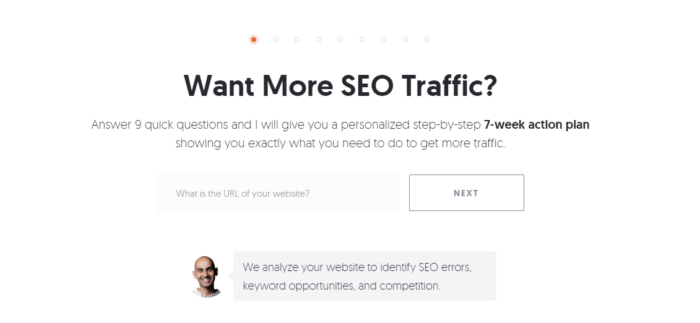
Notice how it’s short, to the point. There’s no fluff; instead, it focuses on the benefits and the next action users should take.
How Does Copywriting Differ from Content Marketing?
Copywriting is content directly aimed at making sales. Content marketing can have different goals (which might include making sales), but focuses on less direct goals, like educating, amusing, or building brand awareness.
Copywriting is more direct, more precise, and leaves less open for interpretation. Here is what we sell, this is why you should buy it, and here’s what it can do for you.
How to Write Killer Copy Like a Pro
Now that you know what a copywriter does, it’s time to dig in and figure out how to do it yourself. Here’s a step-by-step guide to creating copy that will reach your target audience and drive sales.
Step 1: Get to Know Your Audience
You wouldn’t start cooking a meal before knowing how many you are cooking for and what meals they like, right? The same applies to writing copy. Before you begin writing, you need to understand who, exactly, you are writing for.
Start by creating a buyer persona, or a fictional representation of your ideal customer. This will outline who your audience is, including their demographics, job title, location, age, and general information about income.
Consider using a tool like Xtensio, they offer templates that make it easy to create detailed user personas.
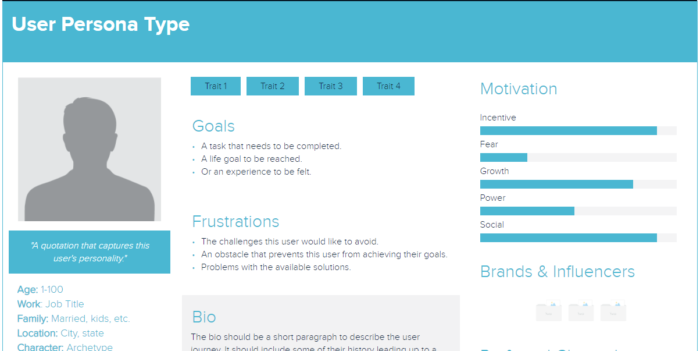
Don’t just wing this. Dig into your current customer data and look for customers with a high lifetime value or retention rate.
Once you have your buyer persona outlined, dig a little deeper by asking yourself questions like:
- Who are you currently selling to?
- Who would you like to sell to?
- What do your current customers love about your offering?
- What struggles do your customers face, and how do you help them solve those problems?
This information will guide you as you begin to write your copy.
Step 2: Use the Right Tone for Copywriting
Writing well is about more than choosing the right words. Tone, or the attitude your writing uses, gives your writing far more context than just the words you choose. It tells prospective customers if you are fun-loving, serious, quirky, or uber professional.
Consider these two copywriting examples for a fictional company that sells sales software:
Understand your customers better using state of the art software designed to take your business from zero to hero.
It’s professional, shares the tool’s major benefits (it’s advanced and helps you understand your customers better.) But it also uses a bit of a quirky tone “zero to hero” is a slang phrase that shows they don’t take themselves too seriously.
Now, consider this:
Gain a deeper understanding of your customers using our AI-powered sales software. SellingPlus software helps streamline your sales funnel and drive revenue.
This example has the same general information as the first, but the tone is more professional and digs a little deeper. They use AI to power their software and help improve the sales process. The tone is more professional, and is likely better suited to a C-suite executive or an enterprise company.
While the information is essentially the same, the tone is adjusted to the audience. It helps customers feel like they are in the right place and this software is right for their business.
If getting the right tone is a struggle, I’ve got great news. Grammarly has a built-in tool that helps you adjust your writing tone to fit your audience.
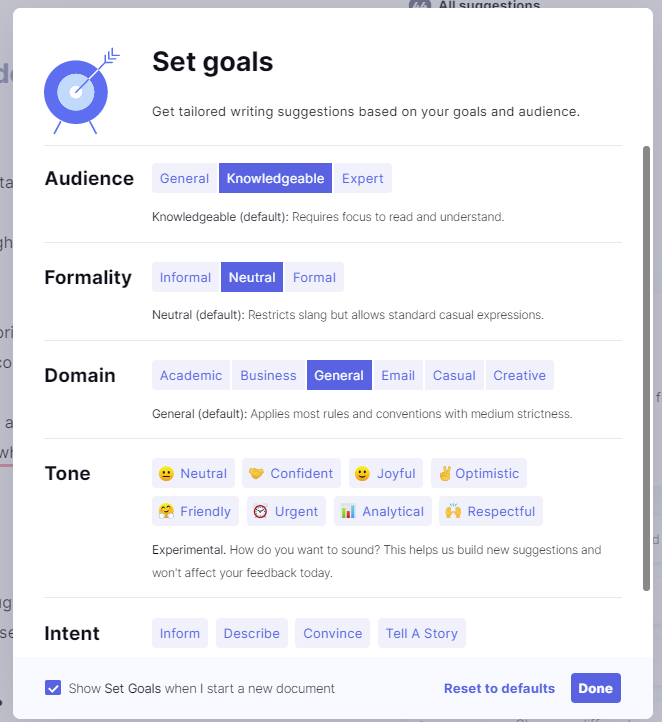
It allows you to outline exactly what tone you want to use based on your audience.
For example, if you choose a “general” audience, the tool will highlight complex sentences that might be hard for a general audience to understand.
Step 3: Stress Your UVP (Unique Value Proposition)
The internet and the rise of globalization has given us more options than ever.
If you want a new mattress, you don’t have to choose from the two local furniture stores — now you can order a mattress from anywhere in the world and have it delivered to your door in days.
Having more options is a good thing. For businesses, however, an increase in consumer options means there are more competitors
Which is why your copy needs to focus on what sets you apart, or your unique value proposition.
Let’s be honest — your business isn’t perfect for everyone, and you shouldn’t be!
Maybe you focus on helping small businesses handle their social media marketing or provide software that helps free-range chicken farmers track egg production.
Your UVP should be laser focused on explaining why you are the right fit for your specific audience.
For example, small businesses have a smaller budget and might want to focus on organic growth rather than paid social ads. Free-range egg farmers might need sensors that cover a wider area than factory farms.
Uber focuses on their convenience. They might not be the cheapest option and they might not be a good option for groups of 10, but they are convenient.
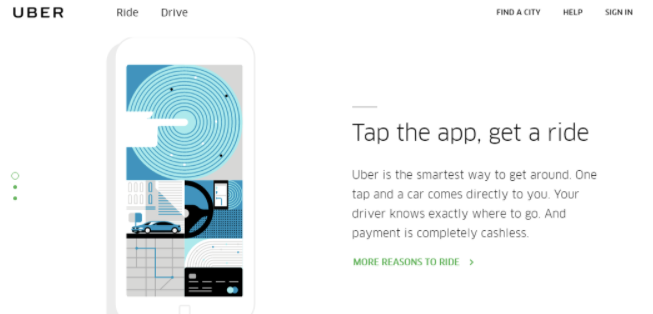
You don’t have to be good at everything. Rather than focusing on all the amazing things you do, take the time to settle on what really sets you apart.
Then focus on that in your copy.
Step 4: Use Copywriting to Solve the Pain Points
When you write copy, it’s tempting to focus on the good stuff like how awesome your product is or how much your current customers love you.
However, customers aren’t looking for a product or service because everything is sunshine and rainbows — they’re looking for a solution to a problem. Those problems are pain points, and they should be the main focus of your copy.
For example, when people consider using the key research tool Ubersuggest, they are looking for more traffic. That is the problem they are trying to solve.
The copy on the landing page focuses directly on that problem by asking, “Want more traffic?”
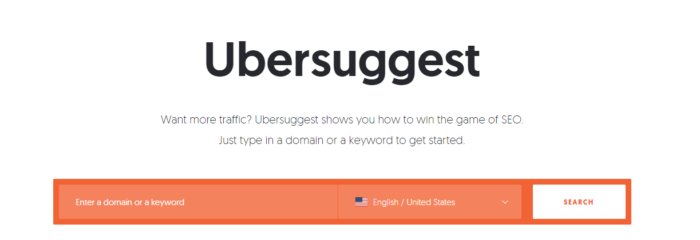
We could focus on what our tool does, or how it helps you research your competitors. Those are great features that users love. But that’s not what they are worried about — they just want more traffic.
According to copywriter Rose Crompton, there are six main pain points customers face:
- Financial
- Risk and trust
- Ease and convenience
- Productivity and time
- Processes and journey
- Communication and support
Think about what pain points your customers face and drive home how you help them solve that problem.
Step 5: Leverage Social Proof
Social proof is a powerful marketing principle. Here’s why it works: when we see that someone else has had a good experience with a product or service, we want to enjoy the same benefits.
Why is it so effective? Because we trust information that comes from other users, like family members or even celebrities, more than information that comes directly from brands.
Say you are looking for a new Indian restaurant. Are you more likely to trust your best friend’s recommendation or an ad you see on Facebook? In fact, 70 percent of consumers trust review sites, while only 33 percent trust advertising.
Social proof can help make copywriting more powerful by increasing trust.
There are two ways to leverage social proof in copywriting:
- Use social proof to inspire your copywriting: Reviews and customer surveys can help you understand what customers love about your product. Use social proof to determine what pain points to focus on and what benefits to highlight.
- Include social proof near copy: Add reviews and case studies to landing pages, homepages, and your website to strengthen your copy and show that other people like what you have to offer.
Step 6: Delete the Fluff
It’s easy to get long-winded when writing. You might be used to writing emails explaining decisions to your boss or crafting workflow documentations. In those situations, a few extra words won’t matter and might actually be helpful.
Even in a blog post, like this one, longer prose can work.
Not in copywriting.
When you write copy, every single word must serve a purpose. If it doesn’t educate, stress a benefit, or build a connection, it needs to go.
Here are a few common words and phrases to ditch when writing copy:
- That
- In order to
- Maybe
- Very
- A little
- Even
- Just
- Perhaps
- So
- Really
- Of
- Like
Now, your copy does have to be readable. Sometimes these words are necessary, but consider whether they actually bring anything to the table or are just filler.
Consider running your copy through the Hemmingway app, which looks for overly complex sentences and phrases.
Then, substitute these filler phrases with powerful words that drive action rather than taking up space.
Step 7: Test, Test, and Test Again
Copywriting is a process. Part of the process is figuring out what resonates with your prospective customers. No matter how much research you do or how many times you poll your audience, you need to A/B test your copy.
I’m consistently surprised by what works and what doesn’t in copywriting. Sometimes leads have different problems, sometimes the tone needs a bit of work. In addition, tastes change over time.
For example, two years ago telling customers you use AI might not have meant anything. Today, with the rise of AI and machine learning, that could be a selling point. If you stuck with the same old copy, you’d never know!
However, there’s one catch — don’t test drastically different versions of your copy. Instead, test one or at most two element changes and see which drives the most conversions. Pick the version that is most successful, then test again. And again.
Here’s a few elements to consider testing:
- Point of view: “You can save” versus “Save now,” for example.
- Button copy: “Buy Now”, “Get your free account” or “Sign up.”
- Headlines: Focus on different features or pain points.
- Formating: Bullet points versus numbers lists, for example.
- Calls to action: What drives consumers to take action? Test multiple CTAs to see what works best.
Several tools make A/B testing you copy easy, including Google Optimize and Optimizely.
Remember, A/B testing should be an ongoing process you use to help improve your copy over time. Don’t run one or two tests and call it good.
Conclusion
Learning to write powerful copy is key to a successful digital marketing strategy. The best product or service won’t sell if you don’t know how to write persuasive copy.
The copywriting tips above will help you understand your audience and focus on what matters so you can write copy that converts.
Need help with copywriting? Our team of expert copywriters and content marketers creates epic content that gets clicks, shares, and sales.
Do you have copywriting tips to add to the list? Share your best tips in the comments.

See How My Agency Can Drive Massive Amounts of Traffic to Your Website
- SEO – unlock massive amounts of SEO traffic. See real results.
- Content Marketing – our team creates epic content that will get shared, get links, and attract traffic.
- Paid Media – effective paid strategies with clear ROI.

